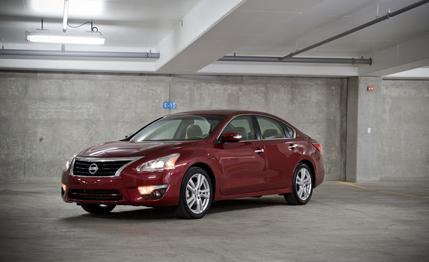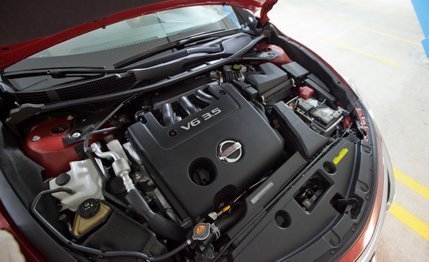
 Instrumented Test
Instrumented Test


With the 2013 Altima just out and a new Honda Accord and Ford Fusion on its heels, you might say we’re at the precipice of another mid-size-sedan war, were not the vehicles in this segment so mild mannered. Calling it a mid-size-sedan argument is probably more accurate. Or, perhaps, a slight reordering of status among several like-minded members of the same tribe. Whatever your name for it, the time has come for a new generation of these cars to disagree somewhat.
Much has changed since the big-volume family sedans last launched together. There is a newly competitive Volkswagen Passat in the mix, as well as two very strong Koreans. Most have revised their cylinder-count aspirations downward, as turbocharged fours have stepped in for sixes in the Ford Fusion, Chevrolet Malibu, Kia Optima, and Hyundai Sonata.
The Altima, when endowed with the ultra-eager 270-hp, 3.5-liter V-6, is Nissan’s holdout against the forces of engine downsizing. Even so, Nissan predicts that only 10 percent of Altima buyers will choose the car with two extra pots. But they’d be well advised to do so, because the V-6 Altima offers big power in a very complete package.


Rather than lop off cylinders and turbocharge its engines in search of efficiency, here Nissan keeps the engine whole and mates it to a continuously variable transmission with low internal friction and large ratio spreads. We know what you’re thinking: Aren’t CVTs those mysterious sets of pulleys and bands you guys are always complaining about? Yes and no. When you’ve got 270 hp at your right foot (30 more than found in the BMW 328i), a CVT becomes a very different sort of animal. Here the CVT isn’t always straining to find power. It’s allowing you to hold onto it, keeping the revs high until well past the point that a conventional automatic might shift, feathering in a lower ratio without a big gear-step event, and even “downshifting,” or presenting a lower ratio, when the car senses you’ve braked hard for a tight corner
Although the performance is laudable—0 to 60 in 6.1 seconds, the quarter-mile in 14.6 seconds at 100 mph—the real-world fuel economy, as observed by us, is a step behind. With feet of purest lead, we got just 22 in the real world, the same as the car’s EPA city rating. Compare that with the poster child for engine downsizing, the Hyundai Sonata. The Korean is about dead even with the Altima in the areas of horsepower and off-the-mark acceleration but beats it soundly in mileage. The last turbo Sonata we tested returned 26 mpg. You might think the character and sound of Nissan’s famed six are worth that 4 mpg. But you might not.